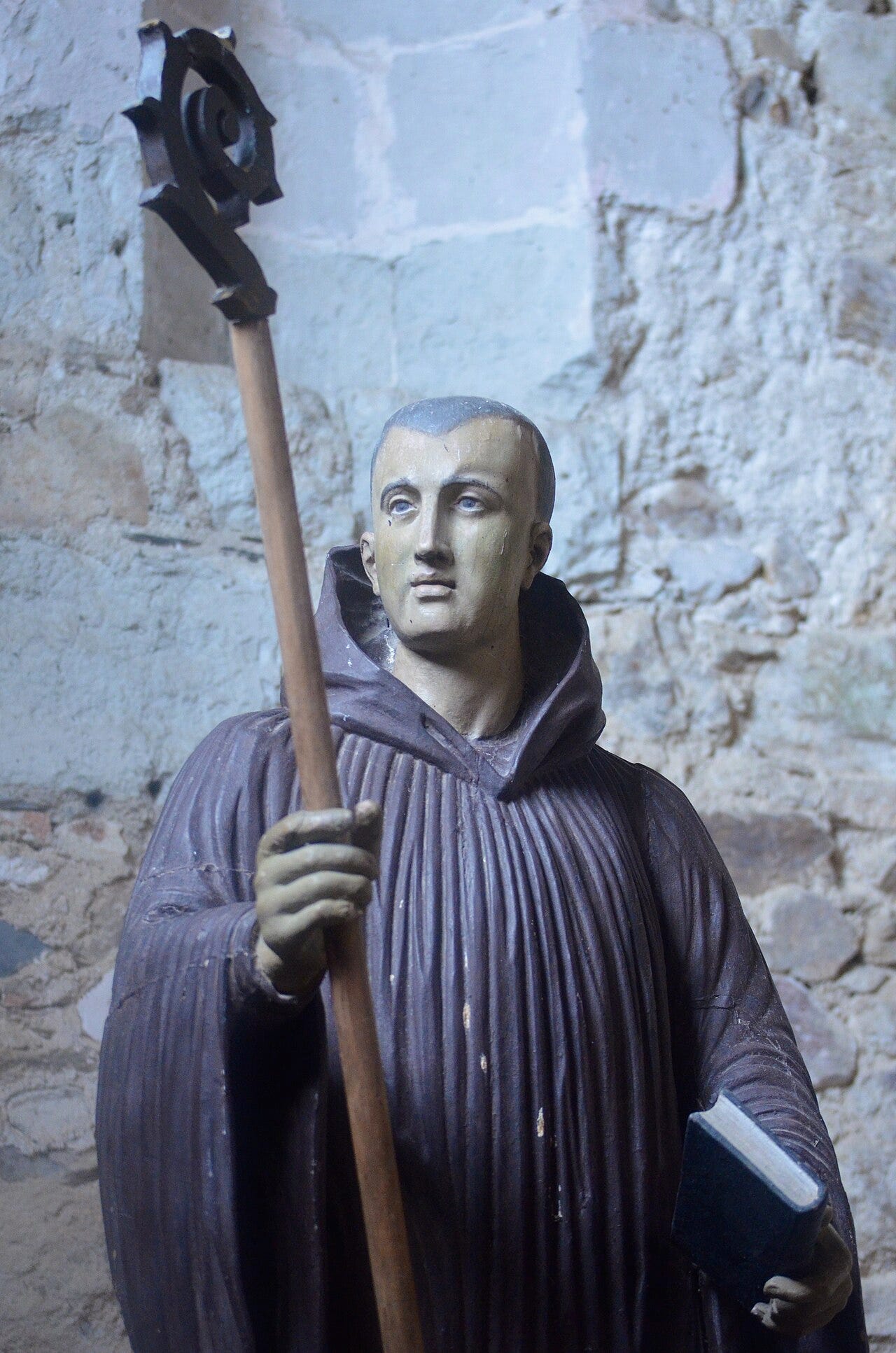Le Lac de Grand Lieu: How Far the Vikings Went to Target Monasteries.
Inland Viking Incursions | Half the Battle of Writing | Salon des Arts et du Livre de L'Epine
Welcome to the newsletter where history, storytelling, and inspiration meet. Every week, I share some of the fun historical research I’ve done while writing my novels, writing reflections (and sometimes tips), and sharing updates on my work and journey. If you were forwarded this message, you can join the weekly newsletter here.
Today’s Dispatch
Viking History: Le Lac de Grand Lieu: How Far the Vikings Went to Target Monasteries.
Writing and Publishing: Getting to the keyboard is half the battle.
Author Update: Le Salon des Arts et du Livre de L’Epine.
Viking History
Le Lac de Grand Lieu: How Far the Vikings Went to Target Monasteries.

I’ve written extensively about the monks of the monastery of Saint Philbert on the island of Noirmoutier, and their seasonal migrations inland to escape the “ravages of the Northmen.” What I have not covered is what happened to them after they definitively abandoned the island in 836, following a failed attempt to defend their land holdings against the Vikings. One might be tempted to think that, since the Vikings got what they wanted, they would leave the monks alone. Not true. Even though the satellite priory they fled to was on the edge of France’s largest lake, Le Lac de Grand Lieu, and somewhat hidden in remote countryside, their struggles with Viking raids did not end on the island.
Le Lac de Grand Lieu covers an expansive twenty-four square miles and is located just a few miles south of the Loire River. What makes it unique is its shallowness. It’s only about six feet deep at its deepest point during summer, and slightly deeper during the rainy seasons of fall, winter, and spring. The priory of Saint Philbert is situated on the western shore of the lake, near the confluence of two tributaries of the Loire. Neither tributary is very wide—today, they are used exclusively by small barges, canoes, and kayaks, with no larger vessels. A thousand years ago, this would have also been the case. An ecclesiastical document mentions the difficulty of building in the area, as materials like stone had to be shipped overland from outside sources because the waterways were considered “unusable.”
The monks probably thought they were safe there. As far as they knew, they were in the middle of nowhere and beyond the reach or interest of the Vikings. Even as the Vikings increased their attacks in the area, with raids along the Loire—including the infamous sack of Nantes in 843—their remote location and hard-to-navigate tributaries likely made them feel safe, giving them a false sense of security.
I imagine the shock the monks must have felt upon seeing longships rowing up the shallow tributaries to the lake on the morning of March 29, 847. Nothing could have prepared them for it. And as had happened numerous times on the island of Noirmoutier, the monastery was robbed and burned. According to the sources, they had time to hide the bones of their patron saint in a hidden corner of the monastery, which saved them from losing their holy relics. To me, this suggests a slow-moving disaster in which the monks had been warned about one or two longships moving up the tributaries, giving them time to leave. After the attack, the monks moved again, this time further inland, to Tournus. The Vikings did not find them there (although marauding Hungarians did).
As I argue in my article on salt as a motivator for Viking raids, the repeated attacks on the island of Noirmoutier before 836 differed in type and frequency from the hit-and-run raids linked to the first phase of Viking expansion. I have used this point to suggest that there may have been more to those raids than just a simple desire to target a vulnerable area. Surely the monks would not have replenished the monastery’s wealth year after year, knowing the Vikings would come for it in the spring, I’ve argued. There must have been something else.
But this single raid in 847, targeting a monastery off the beaten path, says something different. 847 was a significant year for the region. A Viking army—which I call ‘The Great Heathen Army Before the Great Heathen Army’—fought and won three consecutive battles against the Bretons, fueling fears of invasion and occupation. The Frankish nobility was still reeling from the devastation at the Battle of Fontenoy-en-Puisaye, and so they were powerless to help. Raids along the Loire River numbered in the dozens, hitting targets both big and small, including fortified cities and much larger religious centers than Saint Philbert. The region was the Vikings’ oyster. So why did they go out of their way to pillage the monastery of Saint Philbert on the Lac de Grand Lieu?
The simplest answer is that monasteries were just too lucrative not to raid. To me, this suggests that they—the monks—might have been foolish enough to replenish their wealth on the island every year after the raiding season, after all. It contradicts my argument that Viking activity in the area was targeted, resource-driven, and connected to much larger long-term causes of the Viking Age. The idea still holds weight, but the fact that the Vikings later followed the monks inland after abandoning the island shows that the monastery held something of interest to them beyond salt.
It's possible that the raid was simply an accident. Given all the activity in the area, it’s plausible to think that a few ships broke away from the larger fleet and searched the countryside for what they could find. In such a case, we might attribute it to bad luck for the monks. It could also be that the economics of raiding had shifted, and the appeal of salt no longer motivated foreign expeditions. Whatever the situation, it seems clear that monasteries remained too valuable for the Vikings to ignore, even during the second phase of expansion, even if it meant a slight detour into the remote French countryside.
Writing and Publishing
Half the Battle is Just Getting There
I credit much of the discipline I have in writing to the discipline I developed in my chosen sport of bodybuilding. Throughout my twenties and early thirties, I was a dedicated athlete with a calendar that revolved around my gym time. Unlike many of the best-looking athletes of my time, I was not blessed with a genetic advantage. I was a chubby kid with a disposition to be a chubby adult, and I’ve had to fight for every inch I’ve kept off my waist and kept on my chest. I had to work hard and stay organized, never letting up, because I couldn’t afford to let up. Some called it an obsession. I call it dedication.
Over the years, friends and family have looked to me for advice on improving their fitness. My number one saying has always been: “Half the battle is getting to the gym.” I don’t know where I heard it, but it stuck with me my entire adult life. It’s so easy to miss a session. Life gets in the way.
I understand that excuse. I have kids, work, chores, errands, and a packed schedule; things don’t always go as planned. But I never cut out of the gym. I know that as soon as I do that, it won’t just be the gym. It’ll be everything else that matters. Permitting yourself to miss a session enables you to keep unraveling. And that’s where writers need to beware.
When I started writing novels, I was not disciplined. It was a dream to write a book, yes, but a hobby nonetheless. It was something that I could miss if time ran short. But then one day, when I realized I had made no progress in a year, I asked myself, “What if I treat writing time like my gym time?”
Next thing I knew, my calendar had two immovable time blocks: gym and writing. And that’s how it’s been ever since. It’s allowed me to stay productive in writing despite day jobs, family, and life. Carving out that time and forcing myself to the computer to write always yields something. I’m not always motivated or inspired, but I always get something out, even if it’s not good. Today I’ve penned close to ten books before the age of forty, all while juggling the rigors of the busy modern life.
I suppose what I’m trying to say in all this is **in Arnold voice** “GET TO THA WRITING DESK!!”
Author Update
Salon des Arts et du Livre de L’Epine
Next week, I will be a featured author at the Salon des Arts et du Livre de L’Epine. L’Épine is a village on the island of Noirmoutier, which is one of the settings of my series, The Saga of Hasting the Avenger. I’ll be selling copies of The Lords of the Wind in French and signing books.




